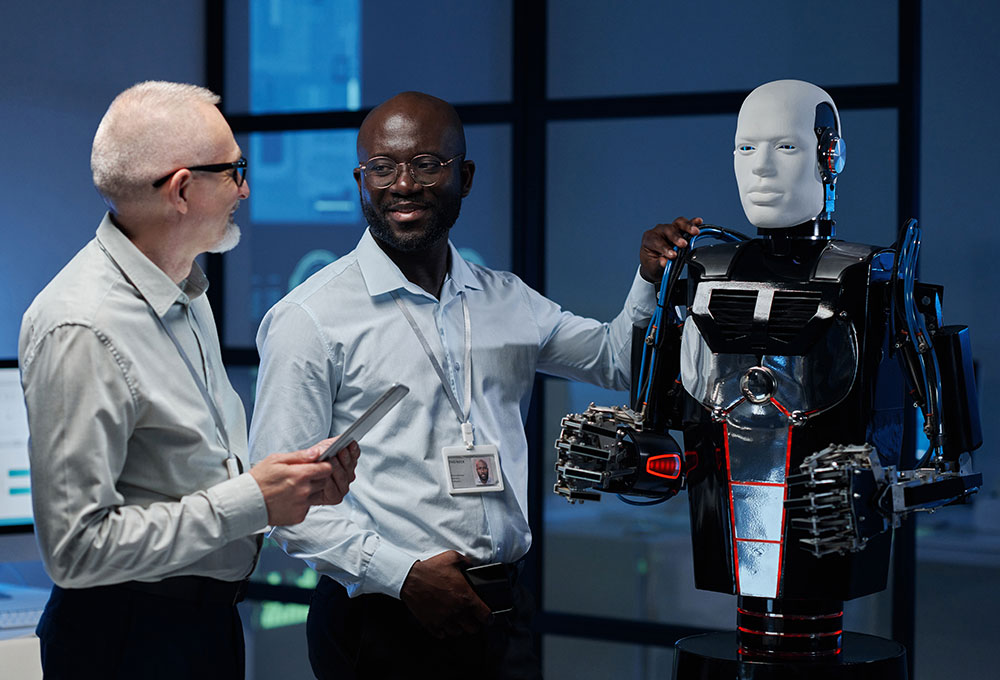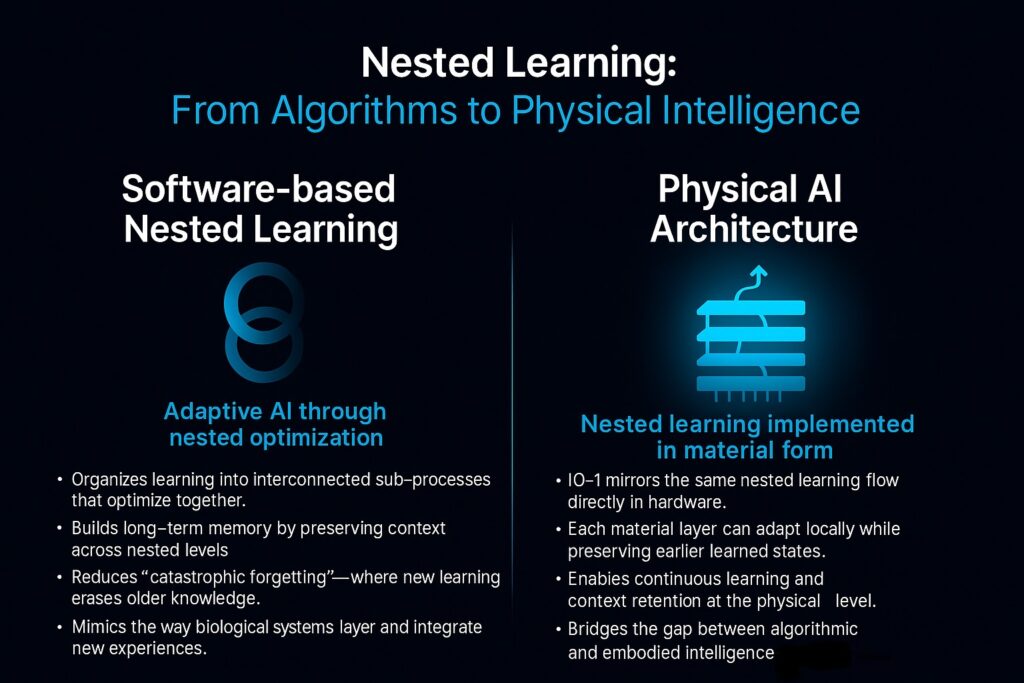

9N is leading the evolution from digital to physical intelligence — embedding AI into the fabric of materials themselves. Our technology bridges computation and chemistry, creating systems that sense, learn, and adapt across robotics, biology, and architecture.


At 9N, we’re redefining intelligence — bringing it out of servers and into matter itself. Artificial intelligence embedded in material.
Our graphene-based intelligent materials embed computation, memory, and learning directly into their atomic structure. Each layer of the iO1 architecture works as a neural and logical network, enabling surfaces, devices, and structures to sense, adapt, and self-learn without external processors.
While current AI like ChatGPT-5 requires over 51,000 GPUs, vast data centres, and megawatts of power, iO1 achieves comparable computational density on a film thinner than a human hair — roughly the size of two A4 sheets. This marks a radical shift from software-based AI to physical AI materials — a sustainable, decentralised form of intelligence that thinks where it exists.
From autonomous drones and robotic skins to self-healing cities and neural wearables, our technology bridges digital and physical intelligence — transforming the built world into an adaptive, energy-efficient, and intelligent ecosystem.
Limitless Applications: Smart cities to neural wearables and space technology.
Adaptive Robotics & Mobility
We merge AI and advanced materials to create robotic systems that move, sense, and think as one. From humanoid robots to autonomous drones, intelligence is embedded directly into their structure — enabling awareness, agility, and genuine autonomy.
Our graphene-based AI materials form the foundation of intelligent physical systems — structures and surfaces that sense, learn, and adapt at the nanoscale. Embedded intelligence enables each layer to analyse its environment, optimise performance, and reconfigure itself for stability and efficiency. These materials exchange data seamlessly across networks, forming the backbone of a new generation of self-adaptive, thinking materials that bring computation into the fabric of matter itself.
Our AI-integrated materials bring intelligence to the physical world — enabling infrastructure that senses, self-heals, and manages energy dynamically. From self-repairing roads and adaptive buildings to energy-harvesting surfaces, these materials transform cities into responsive, self-optimising ecosystems that evolve with their surroundings.
Our AI materials redefine performance in extreme environments — from quantum energy harvesting to adaptive spacecraft surfaces. Designed for resilience, these systems self-regulate power, resist radiation, and maintain optimal functionality where conventional materials fail. By merging intelligence and energy at the material level, we’re paving the way for a new class of self-managing energy systems and next-generation exploration technologies.
Our AI materials interface seamlessly with biology — powering next-generation wearables, prosthetics, and neural interfaces that sense, process, and adapt in real time. These intelligent materials bridge human and machine, enabling responsive, energy-efficient systems that integrate as naturally as living tissue.
We’re currently developing our flagship smart material project — iO1.
Alongside this, we’re exploring a wide range of applications for AI-integrated smart materials, spanning space exploration, robotics, drones, agriculture and everyday electronics. We envision a world where artificial intelligence is seamlessly embedded into the materials around us — from furniture and surfaces to the very fabrics of our built environment.
At 9N AI Materials, we believe that in the near future, all materials across every industry, market, and sector will be intelligent — powered by artificial intelligence.

Robotic skin that can think — intelligent, adaptive, and self-computing materials with integrated AI, enabling real-time sensing, learning, and response.

AI-integrated materials monitor soil, moisture, and air in real time, optimising resources, reducing waste, and enhancing sustainable agricultural productivity.

